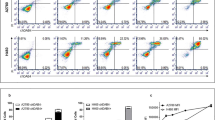Abstract
Background. Positron emission tomography (PET) scanning can be used to measure blood flow. When interleukin-1α (IL-1) is given in a murine model, it induces acute hemorrhagic necrosis, tumor vascular injury and decreased tumor blood flow, and when given prior to carboplatin, there is enhanced antitumor activity compared to either agent alone.
Methods. In a phase I trial of IL-1 and carboplatin, eligible patients with metastatic disease to the lung had PET scanning performed with 15O water to assess tumor blood flow before and after IL-1 administration. Doses of IL-1 were 0.03, 0.06, 0.10, 0.15, 0.20 and 0.30 µg/kg given i.v. over 2 h. At 4 h after IL-1 initiation, carboplatin was administered as a 30-min i.v. infusion at a dose of 400 mg/m2. Treatment was repeated every 28 days. Other measured parameters included granulocyte kinetics, integrin expression on circulating WBC, and carboplatin pharmacokinetics. Of 16 patients, 11 (8 evaluable) underwent PET scanning before and at 2, 4 and 24 h after IL-1 initiation.
Results. Mean measured pretreatment tumor blood flow was 1.82 ml/min per g. At 2, 4 and 24 h it was 1.35, 1.67 and 1.62 ml/min per g respectively. Tumor blood flow was significantly decreased (P<0.008) at 2 h after IL-1 initiation. In four patients, liver blood flow was measured at the same time-points as tumor blood flow. Liver blood flow was discordant with the tumor blood flow measures, showing no statistically significant change. IL-1 also caused a decreased WBC at 2 h after initiation (n=14, P=0.025). In addition, polymorphonuclear leukocyte (PMN) and monocyte surface expression of CD11b at 2 h was increased when measured by mean fluorescence intensity flow cytometry (PMN P=0.0269, monocytes P=0.0420). No consistent effect of IL-1 on either carboplatin AUC or platelet nadir was demonstrated.
Conclusions. We conclude that IL-1 has measurable effects on tumor blood flow and causes a significant decrease in blood flow as measured by PET scanning with 15O water at 2 h after initiation. This decrease is temporally associated with a significant leukopenia and an increased expression of the adhesion integrin CD11b on the circulating cell surface (PMN and monocytes). These results suggest that IL-1 causes decreased tumor blood flow in vivo in human cancer patients, an effect that was temporally related to cytokine-induced peripheral blood cellular changes. Furthermore, our findings suggest that PET scanning may be useful to assess the effect of a systemic antineoplastic agent on tumor blood flow in cancer patients.
Similar content being viewed by others
Author information
Authors and Affiliations
Additional information
Electronic Publication
Rights and permissions
About this article
Cite this article
Logan, T.F., Jadali, F., Egorin, M.J. et al. Decreased tumor blood flow as measured by positron emission tomography in cancer patients treated with interleukin-1 and carboplatin on a phase I trial. Cancer Chemother Pharmacol 50, 433–444 (2002). https://doi.org/10.1007/s00280-002-0517-4
Received:
Accepted:
Issue Date:
DOI: https://doi.org/10.1007/s00280-002-0517-4




